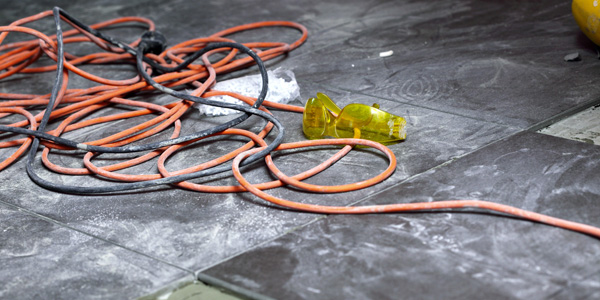
Each October, OSHA announces its top violations of the year. For 2016, OSHA released its list at the National Safety Council Congress & Expo, the world’s largest gathering of safety professionals.
Similar to other “Top 10” lists, the list doesn’t change much from year to year. Why? If employers worked to correct these hazards, OSHA believes the number of deaths, amputations and hospitalizations would decline drastically.
That may seem discouraging, considering employers are required to run safe workplaces. But the list can be useful as a reference and wake-up call to businesses who need to find areas to focus on when it comes to safety.
The List
Here is the ranking of the most-cited violations, fiscal year 2016, which are compiled from more than 30,000 inspections of workplaces by federal OSHA staff:
- Fall protection (Standard 1926.501)
- Hazard communication (Standard 1910.1200)
- Scaffolds (Standard 1926.451)
- Respiratory protection (Standard 1910.134)
- Lockout/tagout (Standard 1910.147)
- Powered industrial trucks (Standard 1910.178)
- Ladders (Standard 1926.1053)
- Machine guarding (Standard 1910.212)
- Electrical wiring (Standard 1910.305)
- Electrical, general requirements (Standard 1910.303)
Collision Repair
Obviously, the collision repair industry isn’t prone to a large number of accidents in some of these top hazard areas, such as fall protection and scaffolds. But consider the following standards that made OSHA’s top 10:
The No. 2 violation: The Hazard Communication Standard (HCS). The HCS helps ensure that workers are safe around chemicals in the workplace. Chemical manufacturers and importers are required to provide a label that includes a harmonized signal word, pictogram and hazard statement for each hazard class and category.
In the shop, information about the identities and hazards of these chemicals must be available and understandable to workers. The HCS requires that workplaces:
- Have labels and Safety Data Sheets (SDS) available for exposed workers
- Train employees to handle the chemicals appropriately
The No. 4 violation: respiratory protection. OSHA estimates that 5 million workers are required to wear respirators in 1.3 million workplaces throughout the United States. In a shop, technicians are exposed to many hazards that require the use of a respirator, including dust, airborne biological hazards, mists, fumes, sprays and other airborne particles. The biggest of these are isocyanates, which are toxic and reactive chemicals that are present in the hardeners or catalysts of polyurethane-based, two-part paints.
Employers must develop a written respiratory protection program, specific to the particular workplace. In addition, employers must assign a qualified program administrator to run and evaluate the program regularly. The program must include information about:
- Selecting respirators appropriate to the workplace and the particular hazards to which employees will be exposed
- Training employees in the proper use of respirators (including putting them on, removing them and checking the seals), limitations and maintenance. Employees must be retrained annually and when changes occur in the workplace
- Providing medical evaluation of employees who must use respirators to determine that their ability to use a respirator
- Fit testing tight-fitting respirators to determine whether the respirator forms a seal on the user’s face
- Ensuring adequate air supply, quantity and flow of breathing air for atmosphere-supplying respirators
- Establishing and adhering to schedules for cleaning, disinfecting, storing, inspecting, repairing, removing from service or discarding, and otherwise maintaining respirators
- Using respirators properly in routine situations, as well as in reasonably foreseeable emergencies
- Regularly evaluating the effectiveness of the program.
The No. 9 and No. 10 violations: In a shop, electrical hazards can be dangerous to worker health. Keep in mind that the most common causes of electrical accidents and injuries include: loose electrical connections; cords and wiring with missing or frayed insulation; equipment running beyond capacity; tools that cause shocks or emit smoke, excessive heat, odors or sparks; wires running across the floor; electrical cords left near heat, flame or water; and electrical cords or equipment that create an arc being used around hazardous, flammable or explosive materials (unless specifically designed for such uses).
In the shop, you can help prevent electrical accidents (and OSHA violations) by:
- Keeping the work area clean
- Making sure employees can locate all electrical shutoffs
- Inspecting electrical equipment and wires before use to make sure they’re properly insulated and grounded
- Assigning the electrical repairs to a trained, qualified electrician
- Avoiding the use of extension cords whenever possible
- Inspecting portable equipment before each use
- Making sure electrical plugs match their receptacles
- Avoiding electrical equipment that emits sparks, smoke or odors
- Being especially cautious around flammable liquids, vapors or dust, or any area that might have held them
- Keeping machines and tools lubricated properly
- Obeying barriers, signs and other warnings near electrical equipment
About 3 million employees are injured on the job each year, and more than 4,500 workers are killed each year. Although your shop may have an outstanding safety record, be sure to review the “most cited violations” list to see where you may be able to focus more resources and make improvements.













